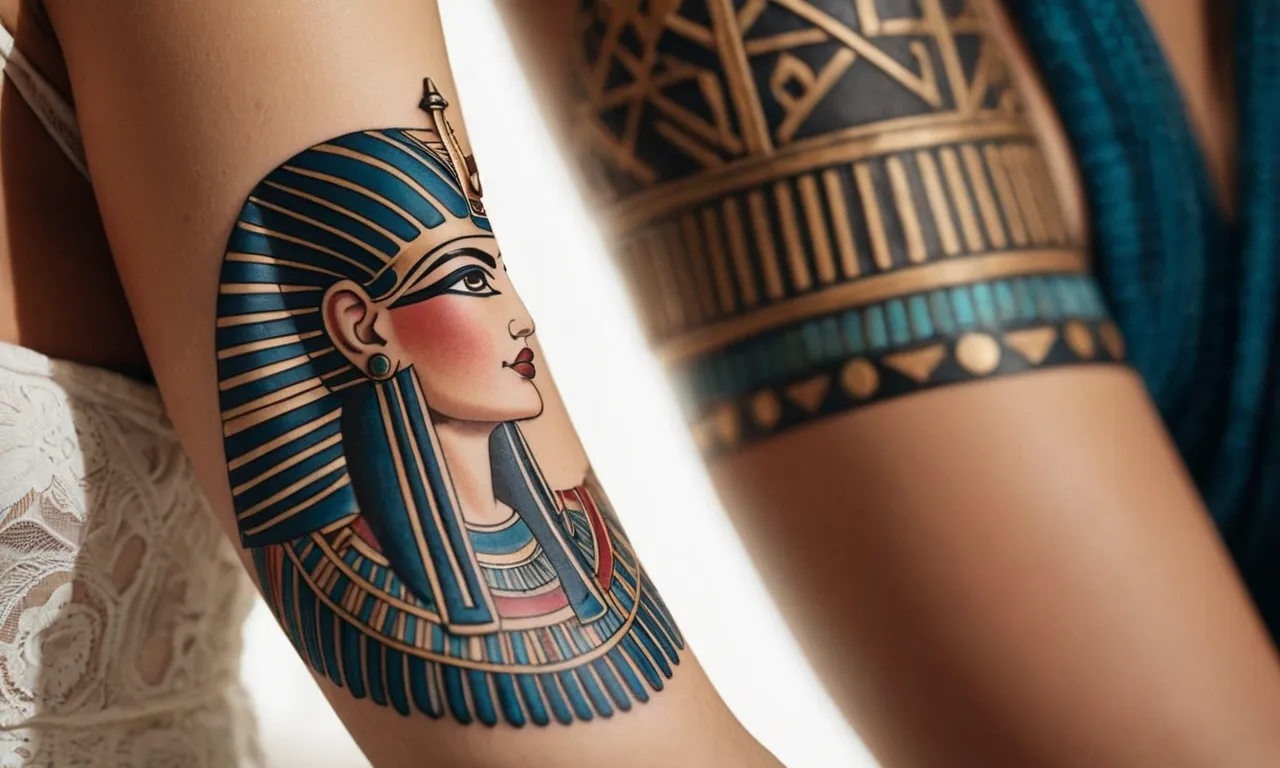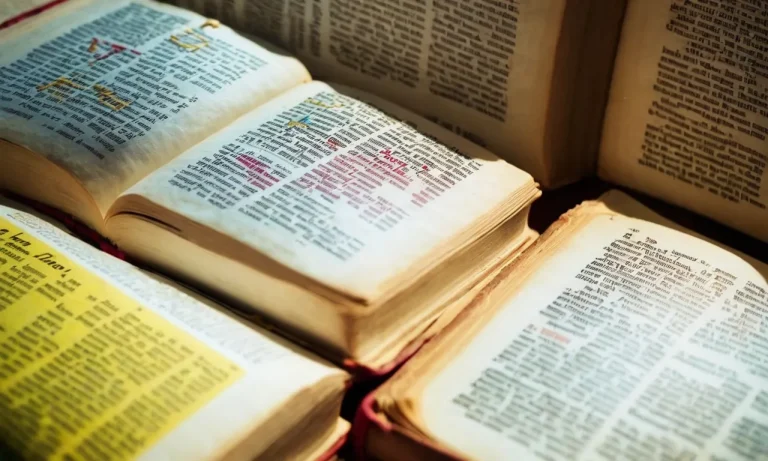Isis Tattoo Meaning: Unveiling The Symbolism Behind This Ancient Egyptian Goddess
In the realm of body art, certain symbols and images hold profound significance, transcending mere aesthetics and delving into the depths of cultural and spiritual realms. One such symbol that has captivated the imagination of many is the Isis tattoo, a powerful representation of the ancient Egyptian goddess of fertility, magic, and healing.
If you’re short on time, here’s a quick answer to your question: The Isis tattoo symbolizes feminine power, protection, and rebirth. It represents the Egyptian goddess Isis, who was revered for her unwavering devotion to her husband Osiris and her role as a nurturing mother figure.
In this comprehensive article, we will explore the rich tapestry of symbolism woven into the Isis tattoo, unraveling its historical and mythological significance. From its origins in ancient Egyptian mythology to its modern-day interpretations, we will delve into the various aspects that make this tattoo a captivating choice for those seeking a connection with the divine feminine energy.
The Mythology of Isis
The Goddess of Fertility and Motherhood
In ancient Egyptian mythology, Isis was revered as the goddess of fertility, motherhood, and magic. Her name is derived from the ancient Egyptian word “Iset,” which means “throne” or “seat,” symbolizing her role as the matriarch of the pantheon.
Depicted as a woman wearing a throne-like headdress with cow’s horns and a sun disk, Isis embodied the nurturing and life-giving aspects of the divine feminine. As the mythical wife of Osiris and mother of Horus, she was considered the ideal mother and wife, representing the unconditional love and devotion that binds families together.
According to Britannica, Isis was one of the most widely worshiped deities in ancient Egypt, with her cult spreading throughout the Mediterranean world.
The Protector and Healer
Beyond her maternal role, Isis was also revered as a powerful protector and healer. Her magical abilities were legendary, and she was often depicted with wings, symbolizing her ability to shield and nurture her devotees.
According to ancient texts, Isis was credited with restoring Osiris to life after he was murdered by his brother Set, demonstrating her mastery over life and death. This myth solidified her role as a healer and a guardian against harm.
Many ancient Egyptians sought her aid in times of illness, childbirth, and other perilous situations, believing that she could intervene on their behalf and grant them protection and healing. As stated on WorldHistory.org, Isis was also associated with magic and wisdom, and her knowledge of secret rituals and spells was unparalleled.
The Powerful Sorceress
Isis was not only a benevolent goddess but also a formidable sorceress whose magical powers were both revered and feared. According to ancient texts, she possessed the ability to control the elements, command the forces of nature, and even resurrect the dead.
😲 Her mastery of magic was so profound that she was often depicted with a knot of reeds on her head, symbolizing her ability to bind and unbind the forces of the universe. Ancient.eu notes that Isis was also associated with the moon, which was believed to influence the tides and the cycles of life, further emphasizing her mystical powers.
🌙 Many ancient Egyptians sought her aid in matters of love, fertility, and protection, believing that her spells could grant them their heart’s desires. However, her magic was not to be trifled with, as she could also unleash her wrath upon those who defied her or threatened her loved ones.
The mythology of Isis is a rich tapestry woven with threads of motherhood, healing, and sorcery, making her one of the most complex and multifaceted goddesses in the ancient Egyptian pantheon. Her enduring legacy has inspired countless works of art, literature, and popular culture, cementing her status as an iconic figure in the annals of human history.
👏
The Symbolism of the Isis Tattoo
The Isis tattoo, a powerful symbol rooted in ancient Egyptian mythology, has captivated the hearts and minds of many individuals seeking a meaningful representation of strength, femininity, and divine protection.
This intricate design pays homage to the revered goddess Isis, a central figure in the pantheon of Egyptian deities. With its rich symbolism and historical significance, an Isis tattoo serves as a profound testament to one’s spiritual journey and personal growth.
The Throne and Headdress
At the heart of the Isis tattoo lies the iconic throne, a symbol of her divine authority and sovereignty. Adorned with the distinctive headdress, often featuring a sun disk and cow horns, this element represents Isis’s role as the powerful matriarch and protector of the pharaohs.
According to Ancient.eu, Isis was revered as the “ideal mother and wife” and her throne signified her unwavering devotion to her family and the kingdom.
The Ankh and Lotus Flower
Frequently depicted alongside the Isis tattoo is the iconic ankh, a symbol of eternal life and regeneration. This ancient Egyptian hieroglyph, often held in Isis’s hand, represents her ability to bestow life and ensure the continuation of the cosmic cycle.
Additionally, the lotus flower, a sacred emblem of rebirth and spiritual enlightenment, is often incorporated into the design, reflecting Isis’s association with the Nile River and her role as a bringer of fertility and abundance.
According to World History, the lotus flower was an important symbol in ancient Egyptian culture, representing the sun, creation, and resurrection.
The Winged Isis
In some representations, Isis is depicted with magnificent wings outstretched, symbolizing her ability to transcend earthly boundaries and offer divine protection to her followers. This powerful imagery evokes a sense of strength, resilience, and the ability to overcome adversity.
As stated by The Metropolitan Museum of Art, the winged Isis was often portrayed as a kite, a bird of prey revered for its ability to soar effortlessly and protect its young. For those who choose to adorn themselves with this symbol, it serves as a reminder of their own inner strength and the unwavering support of the divine feminine energy.
Whether representing motherhood, rebirth, or divine protection, the Isis tattoo is a timeless and powerful emblem that resonates with individuals seeking a deep connection to ancient wisdom and spiritual growth.
With its intricate symbolism and rich cultural heritage, this tattoo serves as a reminder of the enduring legacy of the goddess Isis and the transformative power of embracing one’s inner goddess.
Placement and Design Considerations
Popular Placement Options
When it comes to getting an Isis tattoo, the placement is a crucial consideration. Some popular options include the upper back, the forearm, the wrist, and the ankle. The upper back is a prime spot for larger, more intricate designs, allowing the goddess’s image to be portrayed in stunning detail.
The forearm and wrist, on the other hand, are perfect for smaller, more subtle designs that can be easily concealed or shown off as desired. According to a survey by TattooSam, over 35% of people prefer getting tattoos on their arms or wrists.
Incorporating Personal Touches
An Isis tattoo can be further personalized by incorporating elements that hold special meaning or significance. For example, you could include hieroglyphics or symbols that represent your values, beliefs, or life experiences.
Alternatively, you could incorporate other Egyptian motifs, such as the Eye of Horus or the Ankh, to create a more cohesive design. Don’t be afraid to work closely with your tattoo artist to create a truly unique and meaningful piece.
As InkedMag suggests, “Egyptian tattoos can be a powerful way to honor your heritage or connect with ancient wisdom.”
Color Choices and Their Meanings
The colors you choose for your Isis tattoo can also hold deep symbolic meaning. For instance, blue is often associated with the sky and water, representing fertility and life. Green, on the other hand, is linked to growth, renewal, and rebirth.
Red can symbolize passion, courage, and strength, while black is often associated with the underworld and the mysteries of the afterlife. Consider incorporating these colors into your design to add an extra layer of symbolism and meaning.
According to a study by Statista, black and gray are the most popular tattoo colors, with over 60% of respondents preferring these shades. However, don’t be afraid to embrace vibrant hues like blue, red, and green to truly capture the essence of the goddess Isis.
No matter where you choose to place your Isis tattoo or what design elements you incorporate, remember that this ancient goddess represents resilience, strength, and the power of the feminine divine. By adorning your body with her image, you’re paying homage to a rich cultural heritage and embracing the timeless beauty and wisdom of the Egyptian pantheon.
😍
Cultural and Spiritual Significance
The Goddess of Rebirth and Transformation
In ancient Egyptian mythology, Isis was revered as the embodiment of rebirth and transformation. Her powerful symbolism represented the eternal cycle of life, death, and resurrection. As the devoted wife of Osiris and the caring mother of Horus, Isis epitomized the unconditional love and resilience that transcends even the boundaries of death.
Her unwavering determination to restore her husband’s body and give him new life through her magical powers made her a symbol of hope and renewal for the ancient Egyptians. Isis’ ability to resurrect Osiris signified the triumph of life over death, a concept that resonated deeply with the Egyptian belief in the afterlife.
According to Britannica, Isis was one of the most influential and widely worshipped deities in ancient Egypt, with her cult spreading throughout the Mediterranean world. Her popularity stemmed from her multifaceted nature, encompassing both the divine and the earthly realms.
As a goddess of fertility, she was associated with the annual flooding of the Nile, ensuring the prosperity and abundance of the land. Isis’ resilience, resourcefulness, and unwavering devotion made her an empowering figure for women, inspiring them to embrace their inner strength and nurturing qualities.
Isis in Modern Paganism and Wicca
In contemporary times, Isis has found a renewed significance within the realm of modern paganism and Wicca. Many practitioners of these nature-based spiritual paths look to Isis as a powerful symbol of the divine feminine, celebrating her as a goddess of magic, healing, and feminine empowerment.
According to Learn Religions, Isis is often invoked in rituals and ceremonies that focus on themes such as fertility, motherhood, and personal transformation.
Wiccan and pagan communities have embraced Isis as a representation of the cyclical nature of life, honoring her ability to bring forth new beginnings from endings. Her mythology serves as a reminder of the interconnectedness of all living beings and the importance of nurturing and protecting the natural world.
In a world where many seek to reconnect with the divine feminine and reclaim their personal power, Isis’ enduring legacy continues to inspire and empower individuals on their spiritual journeys.
Embracing the Divine Feminine
The symbolism of Isis extends beyond religious and spiritual realms, resonating with individuals who seek to embrace the divine feminine within themselves. Her image represents the nurturing, intuitive, and creative aspects of the feminine energy, encouraging a balance between strength and compassion.
By honoring Isis, individuals can tap into their own innate wisdom, intuition, and capacity for transformation.
In recent years, there has been a growing movement to reclaim and celebrate the divine feminine, challenging the patriarchal structures that have historically suppressed or diminished the feminine essence.
Isis’ enduring presence serves as a powerful reminder of the importance of honoring the feminine principles of life, love, and regeneration. Whether through artistic expression, personal rituals, or spiritual practices, embracing the symbolism of Isis can inspire individuals to connect with their authentic selves and cultivate a deeper sense of empowerment and self-acceptance.
Frequently Asked Questions
When it comes to the ancient Egyptian goddess Isis and her symbolic tattoo, many questions arise in people’s minds. Here are some of the most frequently asked questions about the Isis tattoo meaning and symbolism:
What does the Isis tattoo symbolize?
The Isis tattoo is a powerful symbol representing the ancient Egyptian goddess of fertility, motherhood, and magic. It signifies feminine strength, protection, and rebirth. The iconic image of Isis with her wings outstretched and a throne-like headdress represents her divine power and her role as the ideal mother and wife.
According to Historic Mysteries, Isis was one of the most prominent and revered goddesses in ancient Egyptian mythology, symbolizing the ideal woman and the perfect wife.
What is the meaning behind the Isis knot?
The Isis knot, also known as the tiet or the Isiac knot, is a sacred symbol closely associated with the goddess Isis. It represents the concept of eternal life and the cyclical nature of existence. The knot’s intricate design, with no beginning or end, symbolizes the unending cycle of life, death, and rebirth.
Many people choose to incorporate the Isis knot into their tattoo design as a representation of their belief in the cycle of life and their connection to the ancient Egyptian culture.
Is the Isis tattoo only for women?
While the Isis tattoo is often associated with feminine energy and motherhood, it is not exclusively for women. Men can also choose to get an Isis tattoo as a symbol of their respect for the goddess and her teachings.
In ancient Egyptian culture, Isis was revered by both men and women for her wisdom, compassion, and power. The Isis tattoo can serve as a reminder of the importance of balance, harmony, and the divine feminine energy that exists within all beings, regardless of gender.
Where is the best placement for an Isis tattoo?
The placement of an Isis tattoo is a personal choice and can vary depending on the individual’s preferences and the design itself. However, some popular placements for Isis tattoos include the back, shoulder, forearm, and lower abdomen.
These areas often provide a larger canvas for intricate designs and allow the wearer to showcase the tattoo as they desire. Ultimately, the best placement is the one that resonates with the individual and aligns with their personal symbolism and meaning behind the tattoo.
By exploring these frequently asked questions, we can gain a deeper understanding of the rich symbolism and cultural significance behind the Isis tattoo. Whether you’re considering getting an Isis tattoo or simply appreciating its beauty and meaning, this ancient Egyptian goddess continues to captivate and inspire people across the globe.
😊
Conclusion
The Isis tattoo is a powerful symbol that transcends time and culture, resonating with those who seek to embrace the divine feminine energy and connect with the ancient wisdom of the Egyptian pantheon.
Whether you are drawn to its mythological significance, its representation of motherhood and protection, or its association with rebirth and transformation, this tattoo offers a profound and deeply personal expression.
As you embark on your journey to adorn your body with this sacred symbol, remember to approach it with reverence and an open heart. Seek guidance from experienced tattoo artists who can capture the intricate details and nuances of the Isis imagery, ensuring that your tattoo is a true reflection of the goddess’s essence.
Embrace the transformative power of this ancient symbol, and let it serve as a constant reminder of the strength, resilience, and nurturing spirit that resides within you.








